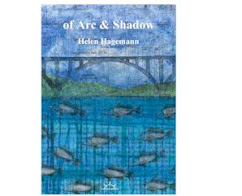Clun Castle
 Clun Castle at a distance. The remains of this ancient building has been left in its natural state. It is cushioned by steep hillsides and hard going (if like me) you are not sure of treacherous ground. The castle is no longer occupied, but is set high on a hill and inside a hillock.
Clun Castle at a distance. The remains of this ancient building has been left in its natural state. It is cushioned by steep hillsides and hard going (if like me) you are not sure of treacherous ground. The castle is no longer occupied, but is set high on a hill and inside a hillock.
History: Humans tend to be territorial beings. Battles continue to rage over control of land, borders expanding or contracting depending on the spoils of war. Britain's history continually reflects such disputes. The borders between England and its two neighboring nations, Wales and Scotland, were the sites of frequent warfare.
Clun Castle started as a motte and bailey castle, built by the Norman, Robert de Say, around 1140-50, as part of the Marcher lordship known as the Honour of Clun. Overlooking the River Clun and close to the confluence of the Clun and River Usk, the site was chosen for its defensive advantage and the presence of a natural rocky mound which could easily serve as the motte. The castle was originally built with timber defenses, but, probably within 20 years, stone replaced the vulnerable wood and Clun Castle became a typical Norman fortress. In 1196, Clun Castle was besieged and burned by the Welsh, under the leadership of the great Lord Rhys in 1196. However, it became the property of the prestigious Fitzalan family, who modified the structure into its present form (sans ruins!) and is responsible for the establishment of the associated village. Reference: http://www.castlewales.com/clun.html
Clun Museum
At first I thought this was a working telephone box, until I discovered it was outside a museum in Clun.The post-box also seemed to represent the past, however most English houses have a slot opening in the front door. The museum wasn't open the day I ventured into town, so I didn't get a look inside. Instead I went with another writer to the same cafe and logged on to the internet. Being without the internet is hard going as all things link online, Facebook, email, twitter and also Instagram.
Our last night was a readings night. I was one of 16 writers, many of them very talented and hard working. We had two singer songwriters, a playwright, a poet, a flash fiction writer, a children's author, one lady writing a memoir of her Jewish grandparents, some were starting out with their project and the rest were novelists. I kept to the novel most of my time and had a chance to read part of Chapter 14 - The Seascape Mural.
 Clun Castle at a distance. The remains of this ancient building has been left in its natural state. It is cushioned by steep hillsides and hard going (if like me) you are not sure of treacherous ground. The castle is no longer occupied, but is set high on a hill and inside a hillock.
Clun Castle at a distance. The remains of this ancient building has been left in its natural state. It is cushioned by steep hillsides and hard going (if like me) you are not sure of treacherous ground. The castle is no longer occupied, but is set high on a hill and inside a hillock. History: Humans tend to be territorial beings. Battles continue to rage over control of land, borders expanding or contracting depending on the spoils of war. Britain's history continually reflects such disputes. The borders between England and its two neighboring nations, Wales and Scotland, were the sites of frequent warfare.
Clun Castle started as a motte and bailey castle, built by the Norman, Robert de Say, around 1140-50, as part of the Marcher lordship known as the Honour of Clun. Overlooking the River Clun and close to the confluence of the Clun and River Usk, the site was chosen for its defensive advantage and the presence of a natural rocky mound which could easily serve as the motte. The castle was originally built with timber defenses, but, probably within 20 years, stone replaced the vulnerable wood and Clun Castle became a typical Norman fortress. In 1196, Clun Castle was besieged and burned by the Welsh, under the leadership of the great Lord Rhys in 1196. However, it became the property of the prestigious Fitzalan family, who modified the structure into its present form (sans ruins!) and is responsible for the establishment of the associated village. Reference: http://www.castlewales.com/clun.html
At first I thought this was a working telephone box, until I discovered it was outside a museum in Clun.The post-box also seemed to represent the past, however most English houses have a slot opening in the front door. The museum wasn't open the day I ventured into town, so I didn't get a look inside. Instead I went with another writer to the same cafe and logged on to the internet. Being without the internet is hard going as all things link online, Facebook, email, twitter and also Instagram.




































0 comments:
Post a Comment